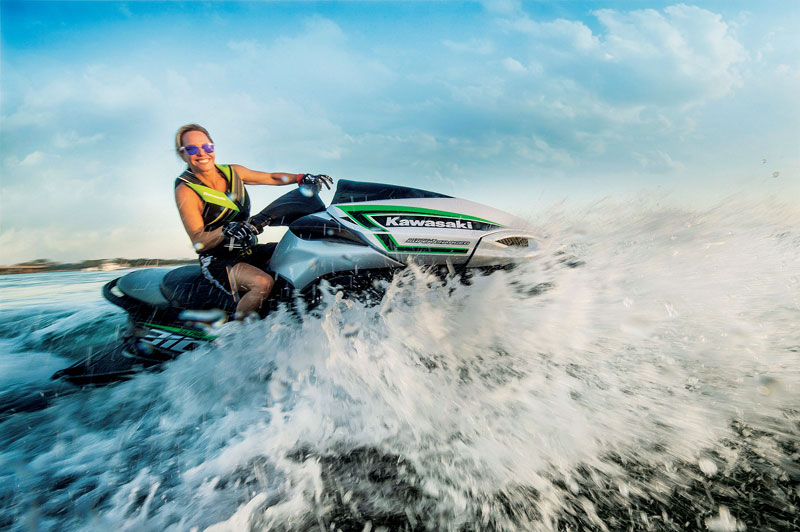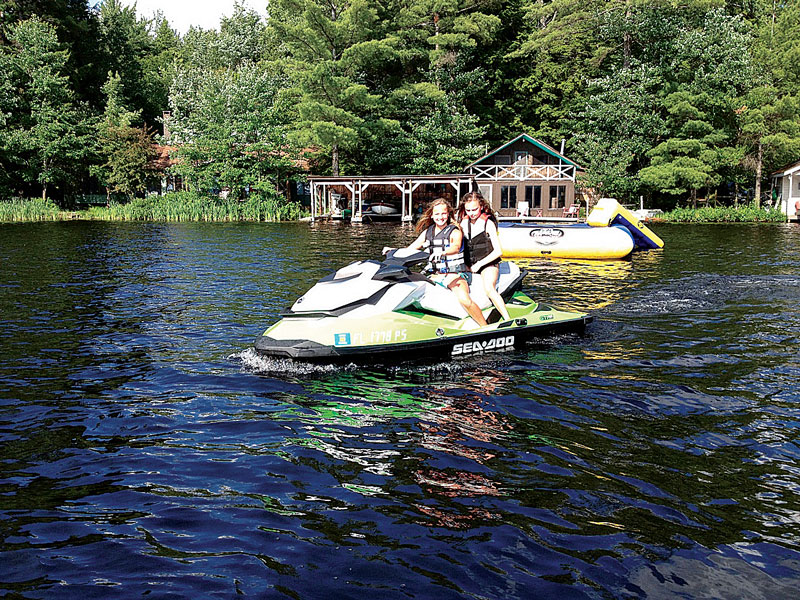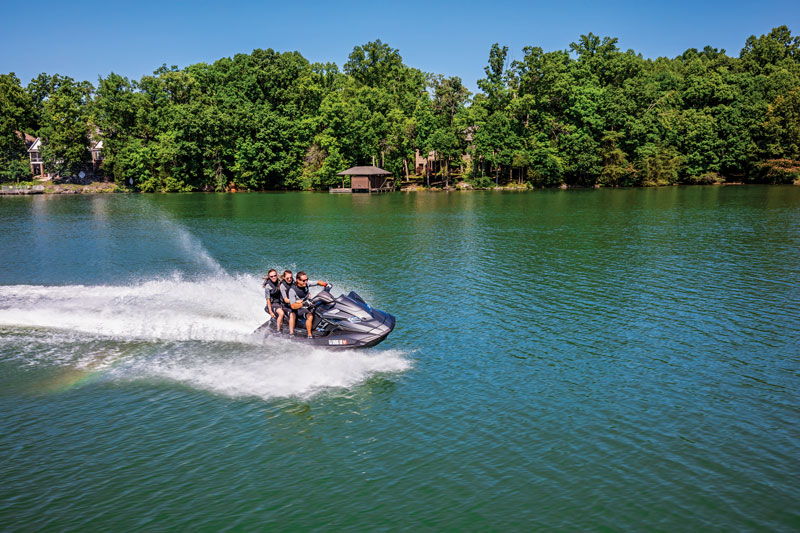How to choose the best craft for your cabin.
By Jeff Hemmel

Whether it’s a way to explore your surroundings, relax and play on the weekend or another toy to add to your fleet, a personal watercraft (PWC) can be an excellent addition to any cabin on or near the water. How do you know which best fits your needs? Here are a few points to consider before making a purchase.
Who’s riding … and how?
Before you invest in a new craft, take a moment to consider who’s going to ride it and how it will be used to enhance your cabin experience.
A high-horsepower, turn-on-a-dime rocketship may be appealing to the aggressive solo buyer, but it’s not a practical choice if you’ll frequently be sharing the craft with family and friends of differing ages and skill levels. Fast, aggressive models may intimidate the young or less experienced. High-horsepower models with supercharged engines also have a healthy thirst for fuel, not an ideal situation if you hope to stretch your fuel budget or gas isn’t conveniently available.
At the opposite end of the spectrum, an ultra-affordable, fuel-efficient recreational model may be just the ticket for the newcomer to the sport or those who want to have another toy in their cabin arsenal. All three major manufacturers have lowered the price of entry substantially in recent years with models that are fun, stable and practically sip fuel compared to their souped-up counterparts.
But if you plan on frequently hauling a load of passengers, using your craft for watersports or want a craft with the power to still satisfy as your skills progress, you may be wise to shop higher in the food chain. Midrange models often occupy a “sweet spot” in their respective lineups with many of the features of flagship models but not the overwhelming power or excessive fuel consumption.
Best advice? Be realistic about how you, your friends and family plan to use the craft, consider your budget for both the craft and its ongoing fuel consumption and then narrow your choices accordingly.

Location, location, location
Two other factors worthy of consideration are where your cabin is located and what the typical water conditions are like. If it’s mostly calm, your choices are pretty much wide open, but if it’s frequently rough, you’ll want to choose a larger craft with a deeper-V hull to better handle the conditions. Otherwise, you may end up sitting on shore while others are out on the water having all the fun.
Towing skiers, boarders and tubers also demands a three-passenger craft. It’s the law in most areas but a wise choice everywhere. Larger craft that position the rider higher off the water also typically keep the driver and passengers drier, something to consider if you live in cooler climates.
Don’t forget to consider where you’ll service the craft should problems arise midseason. If your cabin is in a populated area you’ll likely have access to dealers of multiple brands, but if you’re in a more remote location you may want to consider which brand has the strongest dealer and, more importantly, service presence. Seasons at the cabin are short enough as it is.
Should problems arise, a nearby service location is more apt to be able to get you quickly back out on the water and salvage what remains of your riding season rather than forcing you to load up the craft and risk the downtime associated with a faraway shop.

Consider the extras
While not as critical as the factors above, a craft’s specific features can also enhance or detract from the experience.
One of the biggest innovations of recent years has been electronic reverse and deceleration/braking systems. Both Sea-Doo’s Intelligent Brake & Reverse (iBR) and Yamaha’s RiDE system use the craft’s reverse bucket to redirect pump thrust and enhance the versatility of equipped craft. At startup, that deflected thrust keeps the craft stationary, making for more intuitive, less stressful low-speed operation around the dock or launch ramp. At speed, that same diverted thrust can be used to rapidly slow the craft and avoid obstacles. In both systems, an additional lever on the left side of the handlebars initiates the action, thereby keeping a rider’s eyes focused on the water and both hands on the handlebars.
Cruise control and no-wake features also enhance the user experience. Both make for more comfortable long-distance riding, but don’t overlook cruise control’s appeal when towing those skiers and boarders, as a steady, computer-controlled speed will always prove superior to a less-precise human hand on the throttle.
Boating writer Jeff Hemmel was just 16 when he emptied his savings to buy a used PWC for the family cabin.
 Whether it’s a way to explore your surroundings, relax and play on the weekend or another toy to add to your fleet, a personal watercraft (PWC) can be an excellent addition to any cabin on or near the water. How do you know which best fits your needs? Here are a few points to consider before making a purchase.
Whether it’s a way to explore your surroundings, relax and play on the weekend or another toy to add to your fleet, a personal watercraft (PWC) can be an excellent addition to any cabin on or near the water. How do you know which best fits your needs? Here are a few points to consider before making a purchase.






